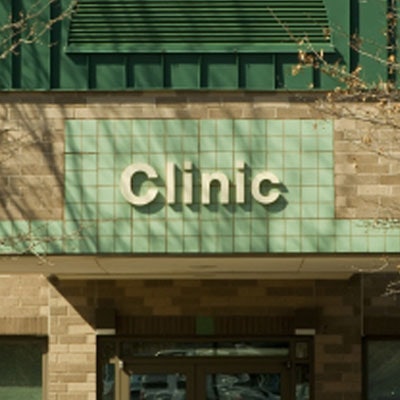
Kaiser Permanente opened a pilot integrated medical-dental clinic in January that is believed to be the first such enterprise that is not publicly funded. Located in Beaverton, OR, the clinic is the first for Kaiser in which both types of care are offered in the same building and medical and dental staff also work together to provide integrated care.
This location was chosen as the initial site for this integration in part because Kaiser only offers dental care through its Northwest division of Oregon and Washington states and because Beaverton has a growing population. Kaiser has 576,000 medical members in its Northwest region and 265,000 dental members, of whom 85% also have medical coverage.
 Kenneth R. Wright, DMD, MPH, is vice president of dental services for Kaiser Foundation Health Plan of the Northwest.
Kenneth R. Wright, DMD, MPH, is vice president of dental services for Kaiser Foundation Health Plan of the Northwest.While this is a pilot program, the nonprofit's dental services and coverage will eventually expand into other regions, according to Kaiser.
"It's just a matter of time before we will see this wonderful capability in all of the [Kaiser Permanente] regions," said Kenneth R. Wright, DMD, MPH, vice president of dental services for Kaiser Foundation Health Plan of the Northwest, in an interview with DrBicuspid.com.
Dr. Wright is also the vice chair of the Harvard School of Dental Medicine's Initiative to Integrate Oral Health and Medicine, whose members represent academia and private industry. He is slated to become chair of the group in 2018.
True integration
Kaiser is ahead of other private health plans in offering this integrated medical-dental model, but hospitals are starting to develop partnerships with dental service organizations (DSOs), and major dental groups are developing relationships with hospitals and dental insurance companies, Dr. Wright noted.
Kaiser has previously had its medical and dental services located in the same building, but the new clinic is the first time in which these services are truly integrated, Dr. Wright explained.
“There is a growing body of evidence that combining medical and dental care reduces healthcare costs and reduces inequities.”
The medical and dental staff now share an electronic medical record system. In December 2016, Kaiser's dental team completed its move to HealthConnect, Kaiser's electronic medical record system, which integrates its medical offices, hospitals, and pharmacies.
When a dental appointment is scheduled, for example, clinical staff can look up if the patient is due for other medical procedures that can be taken care of during the same visit, Dr. Wright said.
The clinical staff in the integrated office consists of three general dentists, one pediatric dentist, seven dental assistants, one family practice physician, one physician assistant, and two nurse practitioners.
Integrated care could be particularly helpful for Medicaid and senior populations and in preventing the billions of dollars a year spent on dental pain at hospitals by patients unable to access to dental care, Dr. Wright noted. He said he talks about Kaiser's integrated model to dental school deans and state Medicaid directors.
"Right now, there is a growing body of evidence that combining medical and dental care reduces healthcare costs and reduces inequities," he said.
The integrated care can also provide conveniences to patients, such as not needing to get stuck in traffic for medical appointments multiple times. On the first day the integrated Kaiser clinic opened, a patient who was dependent on someone else for transportation came into the office for a dental cleaning before undergoing a kidney transplant. While in the dental chair, the patient was able to get blood taken for some necessary blood work, Dr. Wright said.
"It doesn't get any better than that," he said. "It's about providing convenient care to the members where they are."
Patient care advantages
The University of California, San Francisco (UCSF) School of Dentistry is expanding programs that integrate education between dental and other medical students, according to Sheila Brear, BDS, associate dean for academic affairs. She sees many advantages to integrating dental and medical care.
"I'm very much in favor of integrating oral health with general health," she told DrBicuspid.com.
Integrated care can be particularly helpful for people with conditions such as diabetes, with symptoms that cross over between medical and dental arenas. Dr. Brear mentioned the higher risk of periodontal issues in pregnant women and that this may affect the developing fetus.
"It would make sense to have a hygienist in every ob/gyn office," she said.
And receiving medical and dental care at one location during one appointment would be of great help to people with fewer resources and for whom transportation and taking time off from work is difficult, Dr. Brear noted.
"If every time you went to the pediatrician, fluoride varnish was applied to teeth, it may reduce the amount of tooth decay," she said.
Greater integration between medical and dental clinicians could also improve the work environment by allowing for better communication between medical and dental practitioners and avoiding frustrations that can currently happen, such as being put on hold when trying to get information from other medical offices.
Reimbursement and insurance obstacles
Dr. Brear pointed out that challenges such as reimbursement and insurance need to be overcome for the U.S. healthcare system to achieve medical-dental integration. For example, for one visit, there may be only one fee that is paid. She also cited the possible challenge of integrating dental and medical electronic medical record systems.
But she sees many advantages, such as dental and medical practitioners being able to see patient medications on a common electronic medical record, or a patient who comes in for a dental visit being able to undergo diabetes management.
While the practice of medicine and dentistry became siloed in the past, both Drs. Wright and Brear would like to see that change.



















